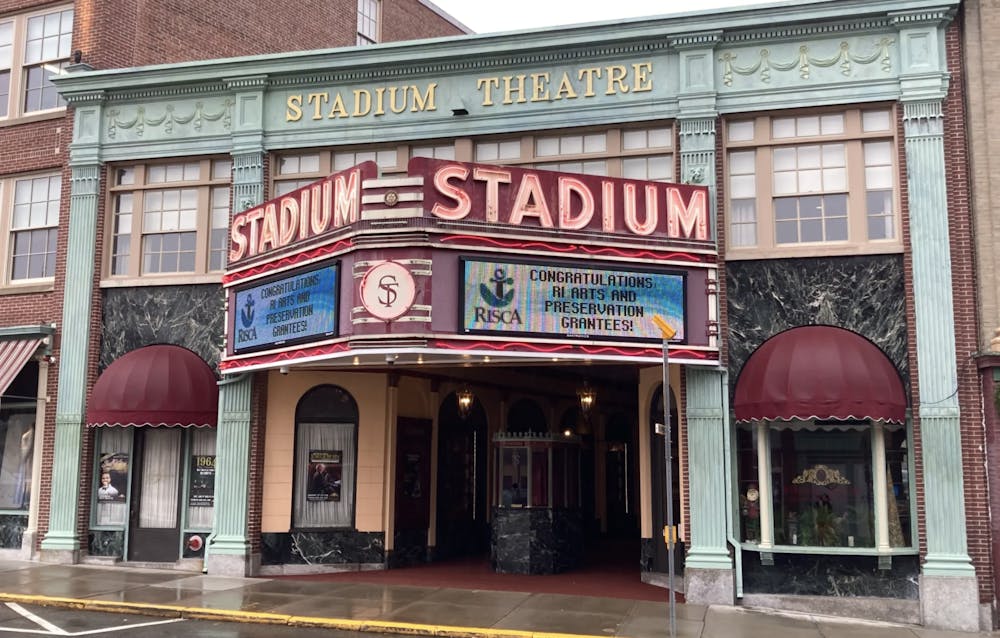On Jan. 11, the Rhode Island State Council on the Arts, in conjunction with the Rhode Island Historical Preservation and Heritage Commission and Governor Dan McKee, rolled out a series of capital grants totaling $3.46 million to 42 arts and cultural organizations across the state. Among the beneficiaries are the RISD Museum, Teatro ECAS — Rhode Island’s only Spanish-language theatre — the Tomaquag Museum, the Pawtucket Public Library and the Providence Performing Arts Center.
Funding from the grants will go largely towards the physical upkeep and preservation of these groups and their facilities, according to RISCA Director of Public Engagement and Communication Faye Zuckerman.
“The State Cultural Facilities Grant Program was created because state lawmakers and voters recognized that many significant cultural properties in our state need extensive repairs or restoration, and that these organizations contribute significantly to the state and local economy,” Zuckerman wrote in an email to The Herald.
Grant applications were evaluated by an external panel of experts in the arts field, Zuckerman wrote. Potential grantees were required to submit a written application to RISCA detailing the project they wanted to be funded. Reviewers then used a rubric to evaluate applications, with points given based on “need for project, impact and capacity to succeed,” Zuckerman added.
“What’s wonderful about the facilities grants of RISCA is … they directly support facilities-oriented work,” said Sarah Ganz Blythe, interim director of the RISD Museum.
Most private donors, Blythe explained, prefer to fund the content side of the RISD Museum’s work. The RISCA grant, on the other hand, allows RISD to improve the back-end necessities that keep the museum open and functional.
“It helps us realize the nuts-and-bolts infrastructure in terms of the upkeep of our galleries, upgrading them so they’re wheelchair accessible (and) improving lighting and seating,” Ganz said.
The RISD Museum’s planned use of the grant also falls in line with RISCA’s broader aims for their capital grant program. In her email, Zuckerman noted that the council paid special attention to grant requests that would increase the accessibility of recipient organizations. She wrote that RISCA’s ultimate hope is to allow Rhode Island’s cultural organizations “to operate in inspiring, functional and accessible spaces.”
“Many of these grant requests are earmarked for improvements to access in a belief that the arts should be equally accessible to all,” Zuckerman wrote. “Elevators, (Americans with Disabilities Act-mandated) entrances and bathrooms (and) accessible studio equipment are just a few examples of such initiatives.”
Another significant feature of RISCA’s latest round of capital grants was that it allowed smaller organizations to access larger amounts of funding than they previously had been able to, according to Executive Director of the Tomaquag Museum Lorén Spears.
For example, the Tomaquag Museum — Rhode Island’s only Indigenous museum — was one of two grantees that received $250,000, the largest sum of money given out to any one individual organization during this round of capital grant funding.
“Most of our normal grants are in the under-$5,000 zone from” RISCA, Spears said. “This is of a much different variety … it’s a huge magnitude.”
Part of the reason the Tomaquag Museum was able to access such a significant amount of funding was because of the scale of its current capital project. The museum is in the process of building a new location in collaboration with the University of Rhode Island, an endeavor Spears hopes will allow the museum to bring its mission of educating the public on Indigenous history and culture to a broader audience.
“We are located right now in rural Exeter — we’re way off the beaten path and it’s not as accessible,” Spears said.
She noted that though the museum has been able to implement virtual programming and sent some of its staff into the Rhode Island community to teach Indigenous history, a new, larger campus in an area already populated by students will be pivotal for its growth. Though Tomaquag’s new build will cost somewhere closer to $9 million in total, RISCA’s grant will be key in helping kickstart the project, Spears added.
Both Spears and Blythe emphasized that the state’s commitment to providing funding for the arts was essential, especially because two years of operating during the pandemic has left many cultural organizations financially depleted.
“For many museums, who had to be closed for many months, there was no admissions revenue,” Blythe said. “Funding is essential, and there has been wonderful funding from the U.S. government in terms of the rescue plan. That’s been enormously helpful. State funding is incredibly important.”





